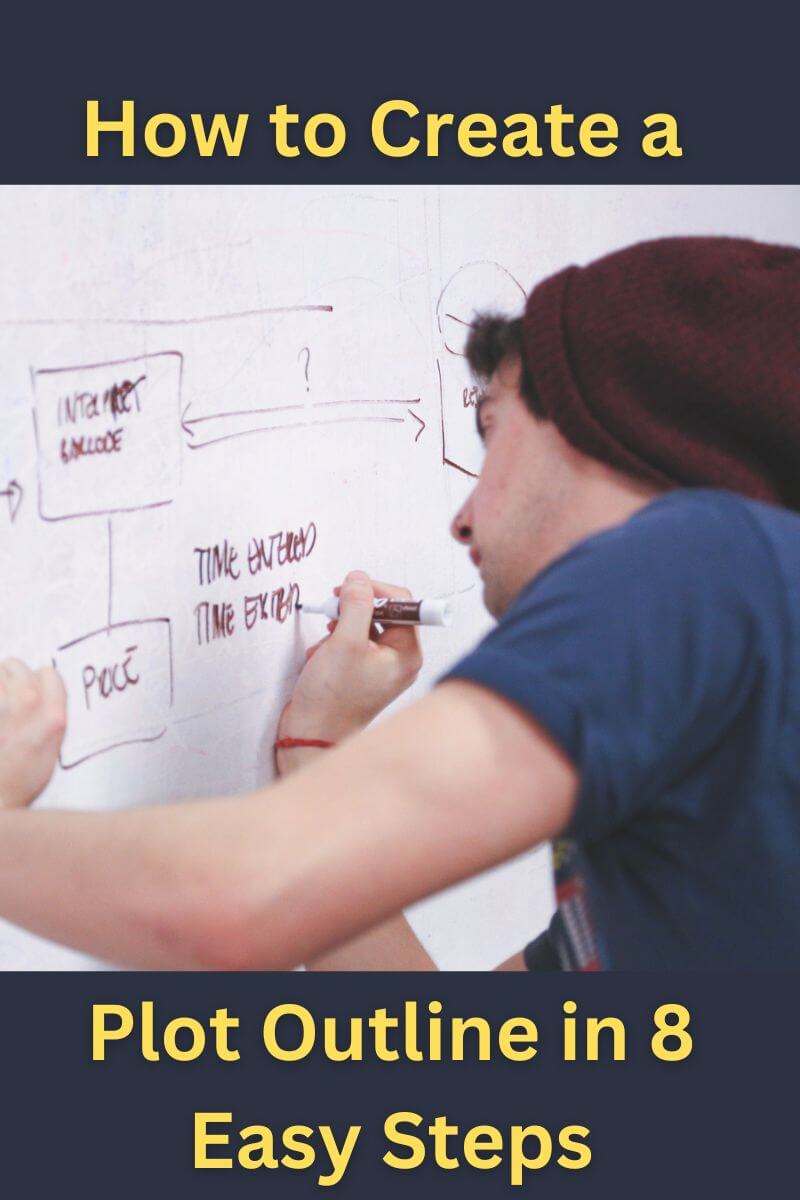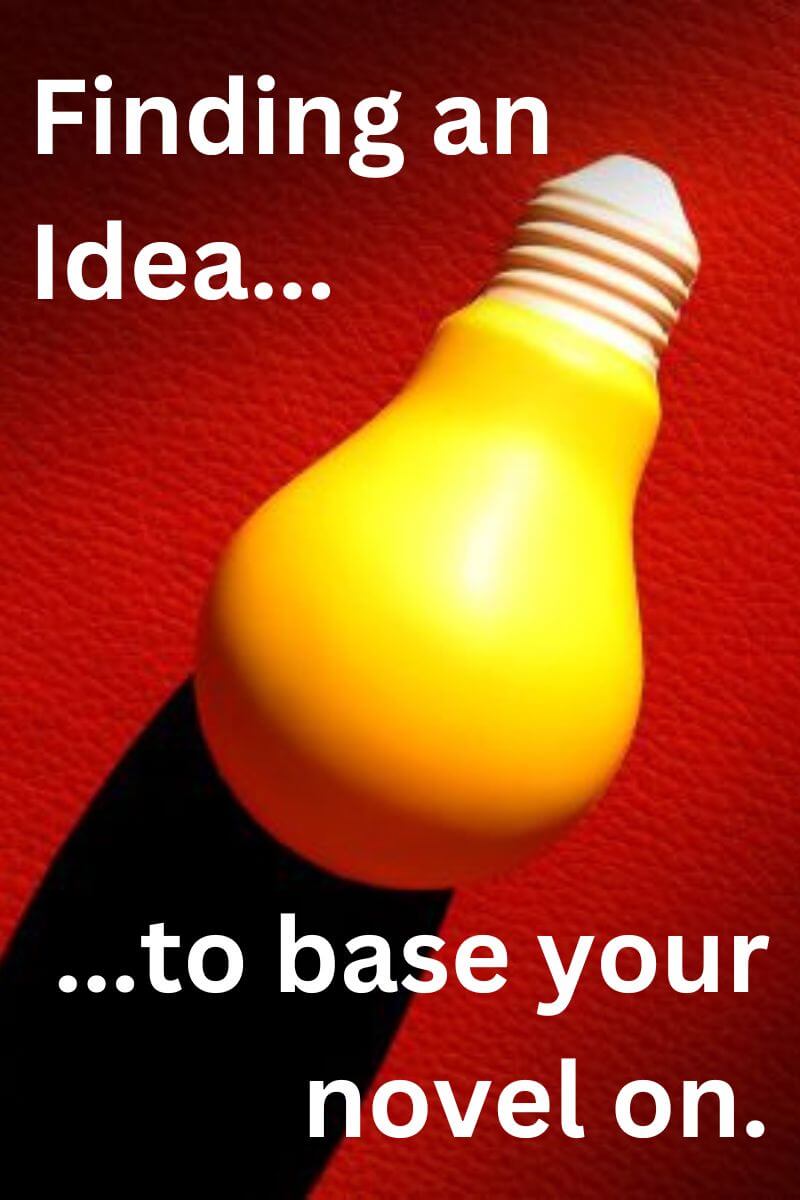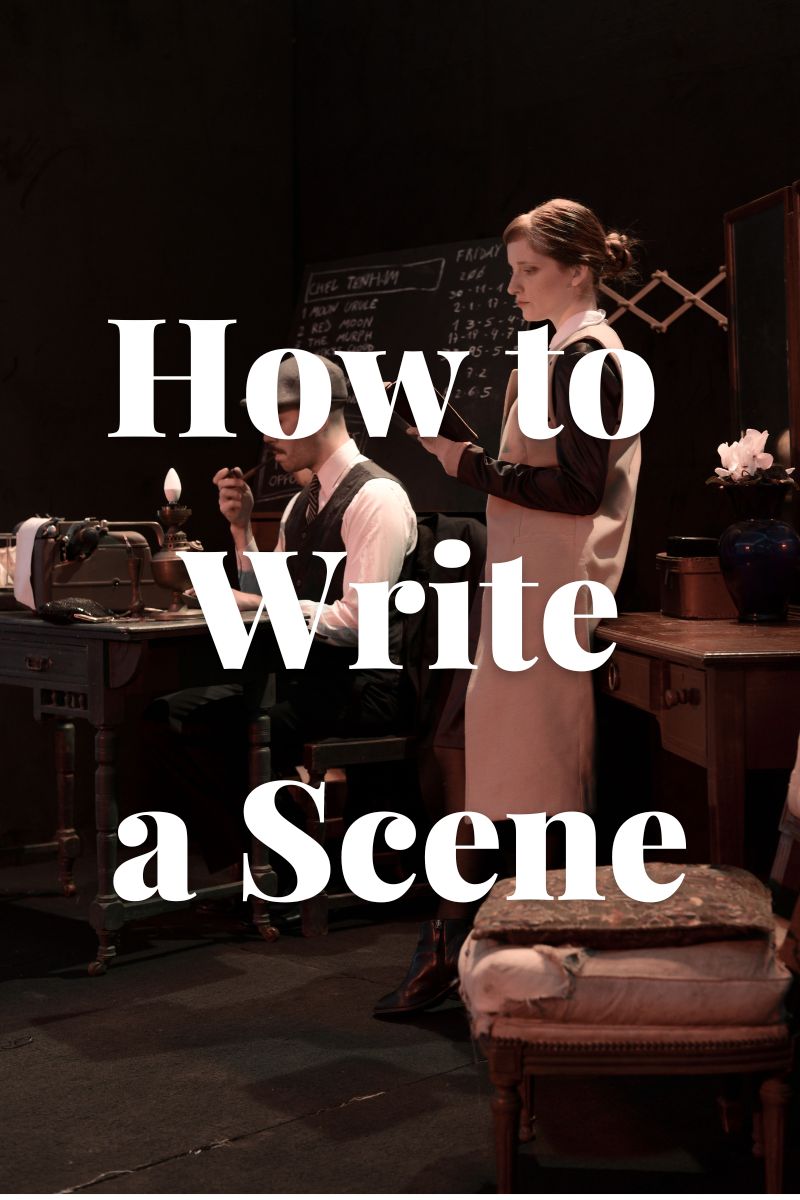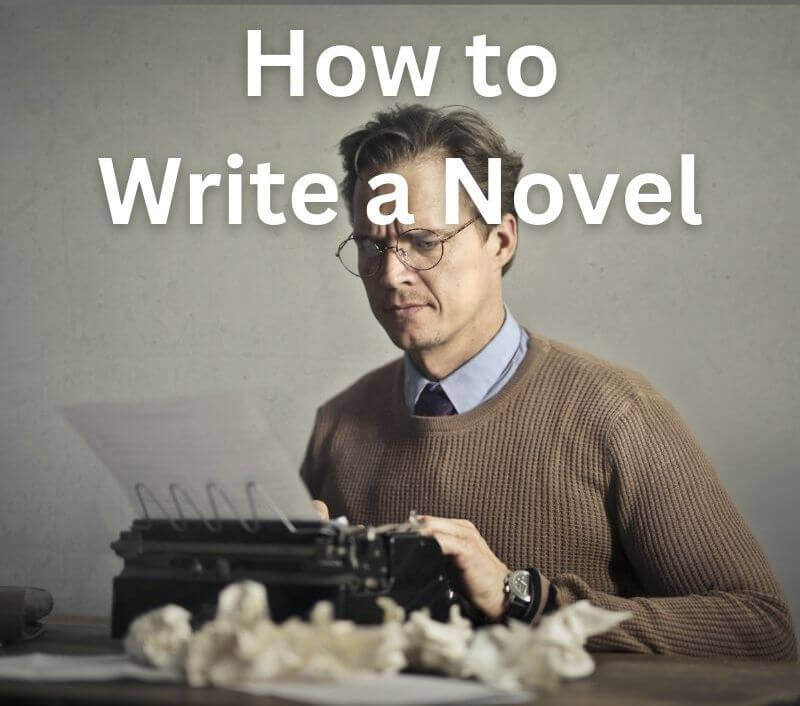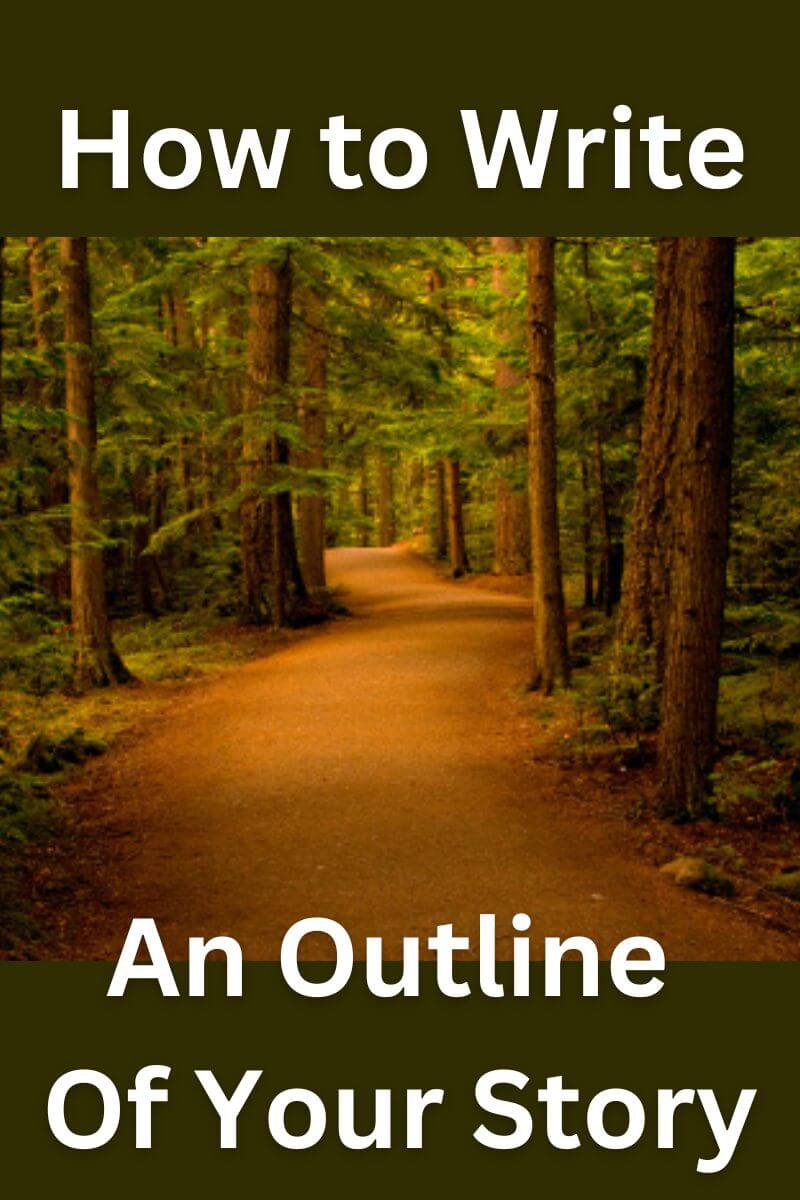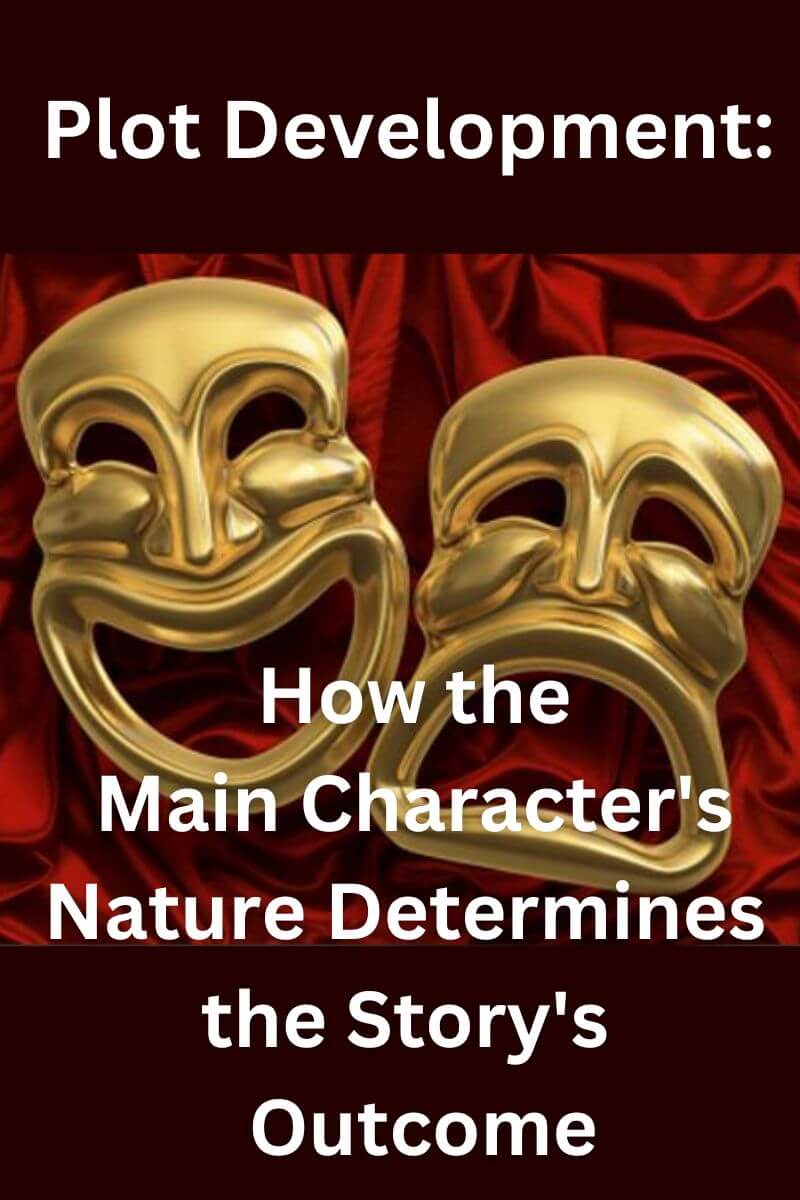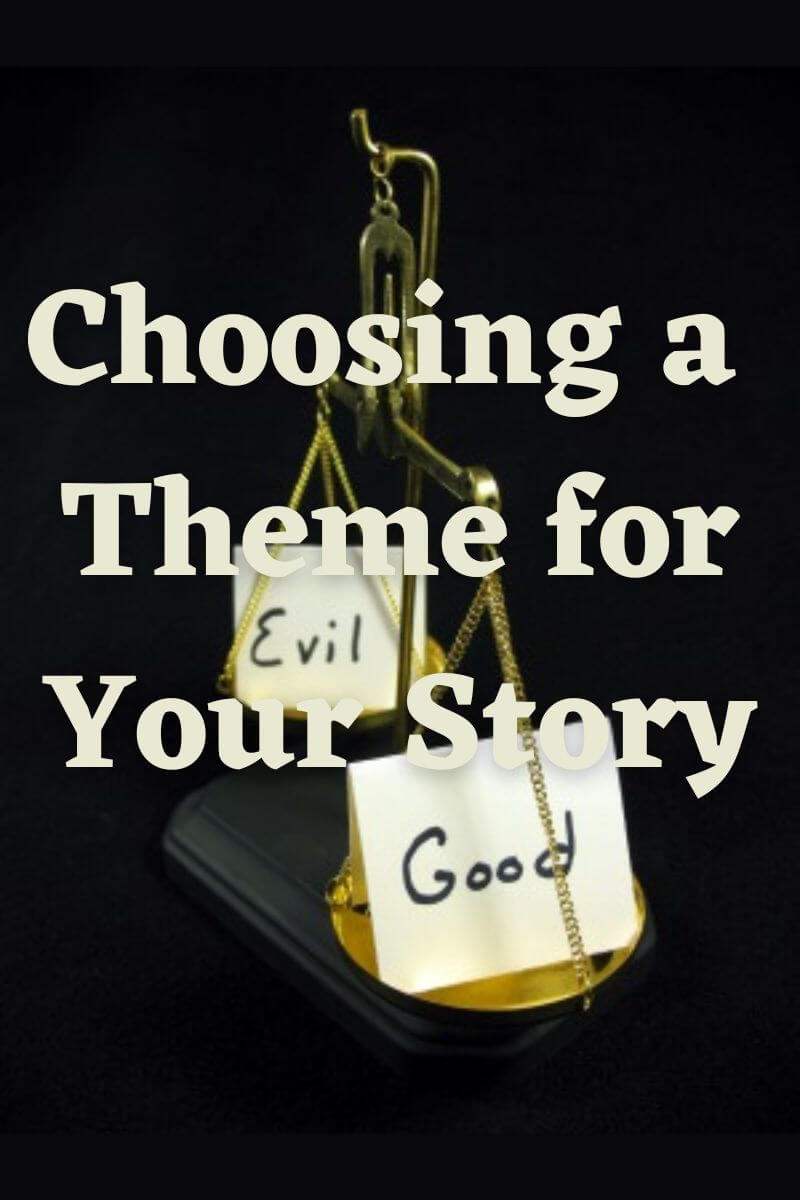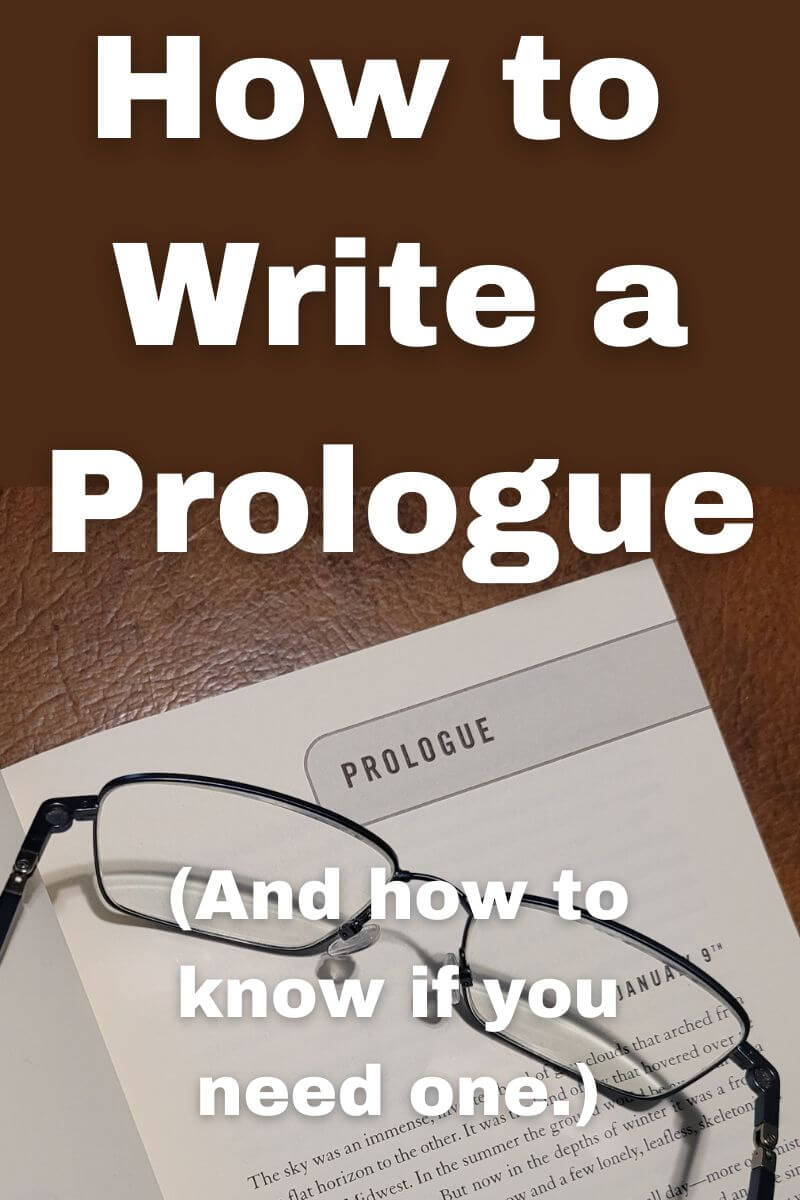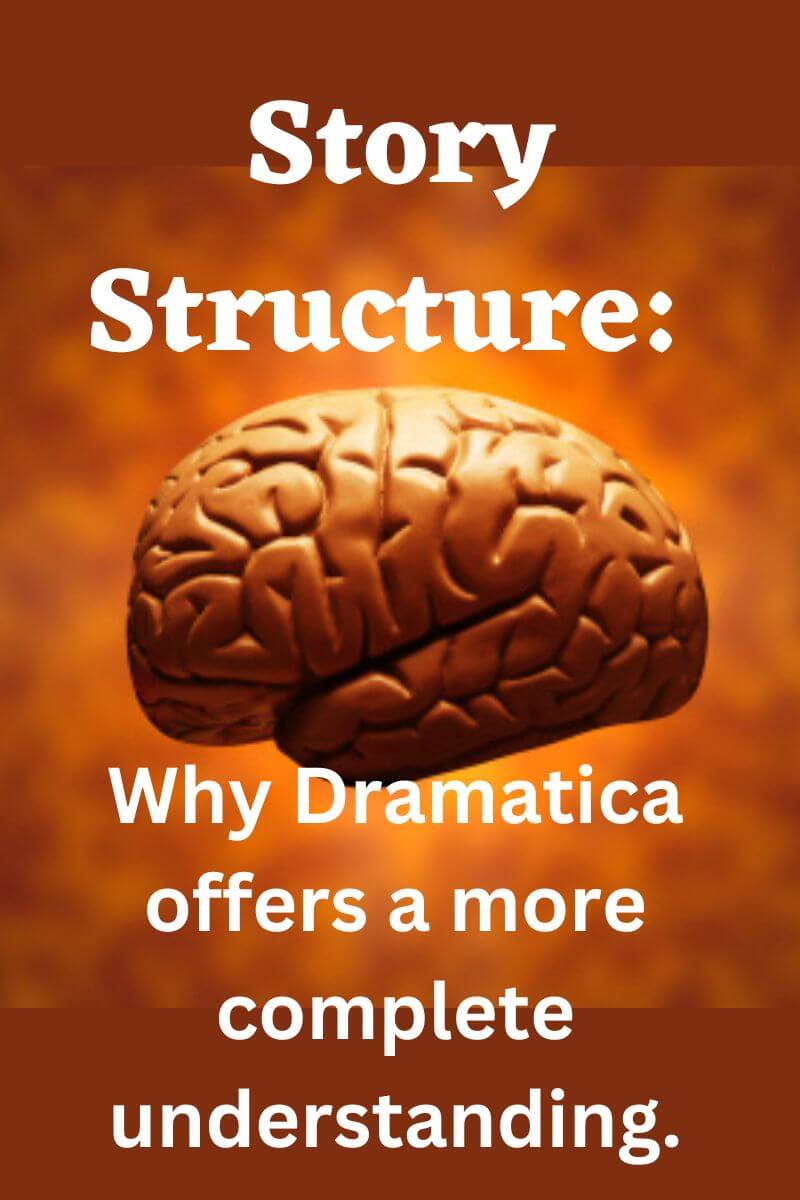How To Outline A Plot In 8 Easy Steps*
By Glen C. Strathy
Writing a story or novel is much easier when you know how to outline a plot before you start writing. You can create a brief outline, half a page or so long, in less than an hour that is emotionally compelling and dramatically sound that will guide you in the writing process. It's easier than you think.
The secret of how to outline a plot is to incorporate the 8 Basic Plot Elements. Starting with your story idea, you only need to make eight choices to ensure the plot of your future novel hangs together in a meaningful way.
Sound intriguing? Then let's get started.
I'll describe each of the eight elements in turn. If you already have an idea for a novel you're working on, open your file or get a pad of paper or your writer's notebook. As you read through the rest of this page, jot down ideas for how each element might work in your story. At the end, I'll show you how to use your choices to create a brief, well-rounded plot outline for your novel. If you don't have an idea for a novel yet, just grab one from your imagination. It doesn't have to be good. It's just an exercise after all.
On the other hand, if you already have a draft for a novel, that you're looking to revise, then ask yourself, as we go through these elements, whether you have included them in your story. Make a brief plot outline for your existing novel in the way suggested below. If you find you have omitted any of the eight elements, you may be able to strengthen the plot of your novel by incorporating the missing elements.
How to Outline a Plot: Start With the Story Problem
1. Story Goal
The plot of any story is a sequence of events that revolve around an effort to solve a problem. Of course, there can be many problems in a story which various characters wrestle with. But the story problem is the one that most characters are concerned with or affected by. The story problem is composed of two elements.
The first element is the story goal, which we covered in detail in the previous article, The Key to a Solid Plot: Choosing a Story Goal. To summarize, the story goal is what your protagonist wants to achieve. Achieving the story goal will constitute a happy ending for the story.
Achieving the story goal is “what the story is all about.”
For instance, let's say we want to write a story about a 38-year-old female executive who has always put off having a family for the sake of her career and now finds herself lonely and regretting her choices. In this case, we might choose to make the Story Goal for her to find true love before it's too late.
There are many ways we could involve other characters in this goal. For instance, we could give our protagonist ...
... a mother who wants her to be happier.
... friends and colleagues at her company who are also unmarried and lonely (so that her success might inspire them).
... a jealous ex-boyfriend who tries to sabotage her love life.
... an elderly, lonely spinster of an aunt who doesn't want the protagonist to make the same mistake she did.
... a happy young family who give her an example of what she has missed.
... a friend who married and divorced, and is now down on marriage. (Forcing the protagonist to work out whether her friend's experience really applies to her – or whether it was just a case of choosing the wrong partner, or bad luck.)
We could even make the company where the protagonist works in danger of failing because it doesn't appreciate the importance of family. It could be losing good employees to other companies that do.
In other words, once you have decided on a story goal, you will build a world around your protagonist that includes many perspectives on the problem and makes the goal important to everyone in that world. That's why choosing the Story Goal is the most important first step in building a plot outline.
If you haven't chosen a goal for your novel yet, do so now. Make a list of potential goals that fits the idea you are working on. What does your protagonist want? What achievment will make for a happy ending? Then choose choose one to base your plot outline on.
2. Consequence
Once you have decided on a Story Goal, your next step is to ask yourself, “What disaster will happen if the goal is not achieved? What is my protagonist afraid will happen if he/she doesn't achieve the goal or solve the problem?”
The answer to these questions is the Consequence of the story. The Consequence is the negative situation or event that will result if the Goal is not achieved. The consequence explains why the goal must be achieved. It justifies the effort required in pursuing the Story Goal, both to the characters in your novel and the reader, and that makes it an important part of your plot outline.
The combination of goal and consequence creates the main dramatic tension in your plot. It's a carrot and stick approach that makes the plot meaningful.
In
some stories, the protagonist may begin by deciding to resolve a problem
or pursue a goal. Later, that goal becomes more meaningful when he
discovers that a terrible consequence will occur if he fails. Other
times, the protagonist may start off by perceiving a threat. Something terrible is about to happen unless something is done. The goal then is to avoid the consequence by achieving a better outcome.
As Melanie
Anne Phillips points out, in some stories the consequence seems to be in
effect when the story opens. Perhaps the evil despot is already on the
throne and the Story Goal is to depose him. In that case, the
consequence, if the protagonist fails, is that things will stay the way
they are. In other stories, the evil despot is planning something terrible and must be deposed before the plan can be achieved.
In our novel plot about the female executive, we've already come up with one possible Consequence – that she could end up like her spinster aunt. We could make the Consequence worse (perhaps the aunt dies of starvation because she is feeble and has no immediate family looking after her). Or we could create a different Consequence. Her employer may go bankrupt unless it becomes more family-friendly.
Write a list of possible Consequences you could have in your plot outline. Then choose one to be the counterpoint to your chosen Story Goal.
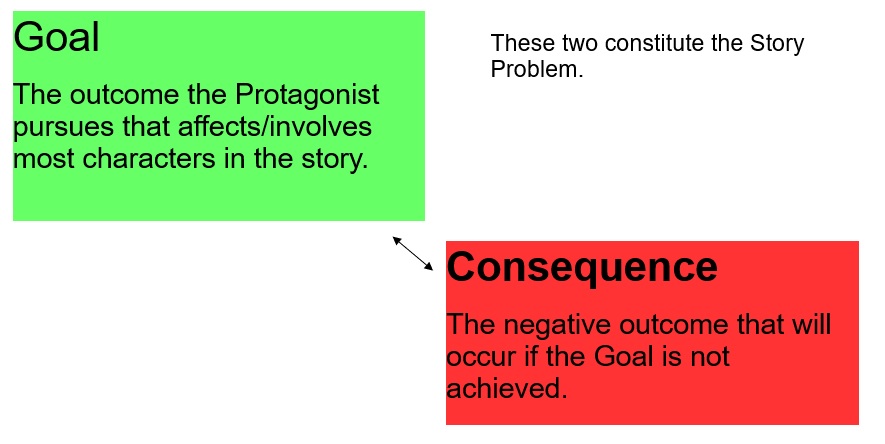 How to Outline a Plot: Start with the Story Problem -- the Goal and the Consequence.
How to Outline a Plot: Start with the Story Problem -- the Goal and the Consequence.How to Outline a Plot: Create an Emotional Roller Coaster That Alternates Between Hope and Fear
3. Requirements
The third element of your plot outline is the Requirement. Requirements are the things that must be accomplished in order to achieve the goal. You can think of this as a checklist of one or more events. As the Requirements are met in the course of the novel, the reader will feel the characters are getting closer to achieving the goal. Requirements make the readers hopeful that the protagonist will succeed.
What
could the Requirements be in our executive story? Well, if the goal is
for our protagonist to find true love, perhaps she will need to start dating again or go to clubs where she can meet single men.
Ask yourself what event(s) might need to happen for the goal in your novel to be achieved. List as many possibilities as you can think of. To keep things simple for the moment, just choose one requirement for now to include in your plot outline.
4. Forewarnings
Forewarnings are the counterpart to requirements. While requirements show that the story is progressing towards the achievement of the goal, forewarnings are events that show the consequence is getting closer. Forewarnings make the reader anxious that the protagonist may fail and that consequence will result instead of the goal.
In the plot outline for our story, events that could constitute Forewarnings might be...
- The company loses one of its key employees to another firm that was more family-friendly.
- The protagonist has a series of bad dates that make it seem like she will never find the right guy.
- The protagonist finds evidence that that, at her age, all the men worth marrying are already married.
- One of the protagonist's friends goes through a messy divorce, showing that marriage is no guarantee of happiness.
While the Story Goal and Consequences create dramatic tension, Requirements and Forewarnings take the reader through an emotional roller coaster that oscillates between hope and fear. There will be places in the plot where it seems the protagonist is making progress, and others where it seems that everything is going wrong. Structure these well, and you will keep your reader turning pages non-stop.
For example, here's how our plot outline might look so far ...
"A female executive in her late 30s has been married to her job. But she has a wake-up call when her elderly, spinster aunt dies alone and neglected (consequence). The executive decides that she needs to have a family before she suffers the same fate (goal). In order to do this, she hires a dating service and arranges to go on several dates (requirements). But each date ends in disaster (forewarnings)."
As you can see, using just these four elements, a plot is starting to emerge that will take the reader on a series of emotional twists and turns. And we're only halfway through our 8 plot elements! (Of course, we started with the four most important ones.)
Notice too that these elements come in opposing pairs. Opposites create drama, which is an important secret for creating tension and momentum in your plot.
Before moving on to the remaining elements, list some possible events that could serve as Forewarnings in your story. For now, just choose one. See if you can create a brief plot outline like the example above using just the first four elements.
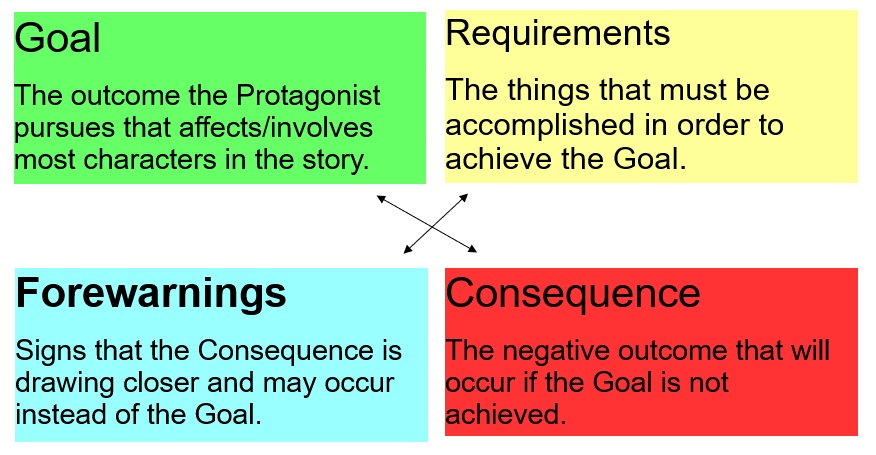 How to Outline a Plot: The Four Primary Elements.
How to Outline a Plot: The Four Primary Elements.How to Outline a Plot: Create Another Roller Coaster Regarding the Characters' Morale
5. Costs
Generally speaking, good plots are about problems that mean a lot to the characters. If a problem is trivial, then neither the protagonist nor the reader has a reason to get worked up about it. You want your readers to get worked up about your novel. So you must give your protagonist a goal that matters.
One sign that a problem or goal matters to the protagonist is that he/she is willing to make sacrifices or suffer pain in order to achieve it. Such sacrifices are called "costs."
Classic examples of costs include the hard-boiled detective who gets beaten up at some point in his investigation, or the heroic tales in which the hero must suffer pain or injury or give up a cherished possession to reach his goal. However, costs can come in many other ways. Protagonists can be asked to give up their pride, self-respect, money, security, an attitude, an idealized memory, a friendship, or anything else they hold dear. If you make the costs steep and illustrate how hard the sacrifice is for the protagonist, the reader will feel that the protagonist deserves to achieve the goal.
In the case of our female executive, perhaps she must give up a promotion she has worked hard for because it would require her to travel so much that she would have no chance of settling down and raising a family.
Make a list of possible costs your protagonist might be forced to endure in order to achieve the Story Goal. For now, choose one idea to include in your plot outline.
6. Dividends
The element that balances costs in a plot is dividends. Dividends are rewards that characters receive along the journey towards the story goal. Unlike requirements, dividends are not necessary for the goal to be achieved. They may be unrelated to the goal entirely. But they are something that would never have occurred if the characters hadn't been on the journey.
In the case of our executive, perhaps her efforts to meet men give her an idea for creating a business of her own – a kind of executive dating service, for instance, that will lead her to a happier career. Or perhaps the quest for love and family forces her to become more compassionate towards her co-workers when their family responsibilities interfere with work.
List possible ways to reward your characters and choose one dividend that feels appropriate for your story. Then move on to our final pair of elements.
How to Outline a Plot: Vary How Easy or Difficult The Goal Seems
7. Prerequisites
Prerequisites are things that make it easier for characters to meet the requirements. Like requirements, as prerequisites are met, the reader feels more hopeful that the goal will be achieved. Perhaps, in order to free the Princess, the hero must defeat the dragon guarding the door (requirement). But luckily, he stumbles upon a magic shield that can protect him from dragon fire (prerequisite). In order to win the maiden's hand, the gallant suitor must show he would not risk losing her for anything. But before he has a chance to do that, he must show he is willing to risk everything to win her (Shakespeare's The Merchant of Venice).
If the requirement for our novel about the executive is that she must go out on several dates, perhaps the prerequisite is that she must sign up at a dating service, buy a new wardrobe, or get a make-over -- anything that will help her in her quest.
Take a look at your chosen requirements and make a list of possible prerequisites that will help the requirements be met. Choose at least one.
8. Preconditions
The last element to balance your plot outline, preconditions, is a junior version of forewarnings. Preconditions are impediments in the plot. They are stipulations laid down by certain characters that make it more difficult for the requirements to be met.
A classic example is Pride and Prejudice in which Elizabeth's quest for happiness is made more difficult by the terms of her grandfather's will, which state that the family property can only be inherited by males. This means that, upon her father's death, Elizabeth and her sisters will be penniless unless they find good husbands first.
However there are many other ways characters can impose conditions that impede the attainment of the Story Goal. They can make their help conditional on favours, insist on arduous rules, or negotiate tough terms.
For instance, perhaps the company where our female executive works has a rule that executives must attend meetings very early in the day - say 6AM on Saturdays. This rule makes it very hard for her to go on Friday night dates and be alert in the meetings. Or perhaps the singles club she joins has some seemingly unfair rules that cause her problems.
You know what to do by now. List possible preconditions your characters might encounter, and choose one you like.
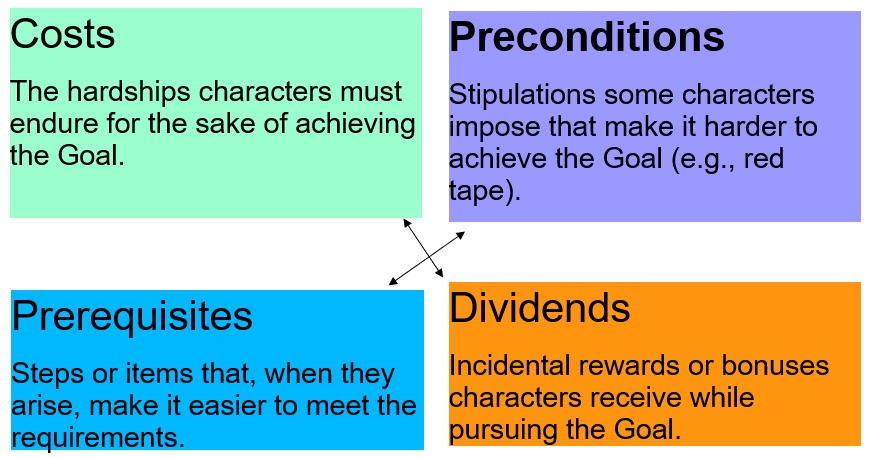 How to Outline a Plot: the Four Secondary Elements
How to Outline a Plot: the Four Secondary ElementsHow to Outline a Plot: Assemble the 8 Elements
Once you have chosen your eight elements, the next step is to arrange them into a brief plot summary. It doesn't matter what order you put them in, so long as all eight are included. In fact, most of the elements can be repeated or included in more than one way.
For example, here's how we might put together all eight elements for our executive story together into a one-paragraph plot outline...
“A female executive in her late 30s has been married to her job. But she has a wake-up call when her elderly, spinster aunt dies alone and neglected (consequence). The executive decides that she needs to have a family before she suffers the same fate (goal). So she buys a new wardrobe and signs on with a dating service (prerequisites). Her boss offers her a promotion that would involve a lot of travel, but she turns it down, so that she will have time to meet some men (cost). She goes on several dates (requirements). But each one ends in disaster (forewarnings). On top of that, because the agency arranges all her dates for Friday nights, she ends up arriving tired and late for the company's mandatory 6AM Saturday morning meetings (preconditions). Along the way, however, she starts to realize how the company's policies are very unfair to people with families or social lives outside work, and she begins to develop compassion for some of her co-workers that leads to improved relationships in the office (dividend).”
About the Ending...
You've probably noticed there's still one thing missing from our discussion of how to outline a plot: how the story ends. We haven't forgotten. Go to the next
lesson to learn about the 4 Types of Endings and how to round out your Plot Outline.
Next Step: Plot Progression
As I said, the 8 Essential Plot Elements can be put in any order, and can be illustrated in different ways at different points in the story.
However, stories also have a progressive plot structure. Plot progression refers to the way events must happen in a certain order to create emotional impact. For example, you wouldn't show the reader the resolution of the story before the crisis, because it would make the crisis emotionally flat.
Building the progressive structure is the next step in how to outline a plot, which you may find valuable. So after you have polished your Plot Outline, use the W-Plot model to give your story the emotional structure it needs.
Still Want More Plot Outline Approaches?
There are plenty of other ways to develop a plot outline, some of which take a more open-ended, brainstorming approach. You can find a good summary of these methods in this article at the Self Publishing School.
Or for other models of story structure, check out our Story Models page.
*The 8 Essential Plot Elements are part of the Dramatica theory of story created by Melanie Anne Phillips and Chris Huntley.
- Home
- Write a Novel
- Plot Outline
Do you have a question about plot elements or any other aspects of novel writing? If so, visit our Questions About Novel Writing page to get the answers you need.
